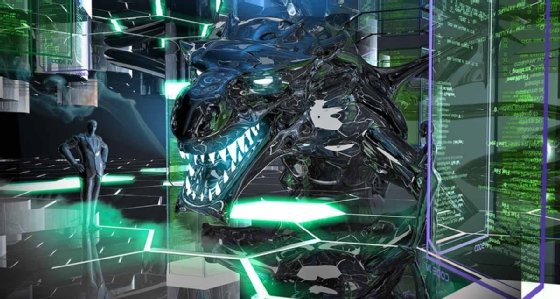computer-generated imagery (CGI)
What is computer-generated imagery (CGI)?
Computer-generated imagery (CGI) is the creation of still or animated visual content using imaging software. CGI is used to produce images for many purposes, including visual art, advertising, anatomical modeling, architectural design, engineering, television (TV) shows, video game art and film special effects, as well as augmented reality (AR) and virtual reality (VR) applications.
CGI does not encompass traditional animation approaches like hand-drawn cartoons and frame-by-frame or stop-motion techniques, as those are not computer-generated. However, CGI is typically used in both live-action and animated films and often replaces traditional approaches. The term CGI encompasses everything from the use of algorithms for generating fractals -- or complex, never-ending visual patterns -- to computer programs that generate two-dimensional (2D) and three-dimensional (3D) animations and special effects.
How does CGI work?
In film and animation development, visual effects (VFX) departments oversee and create CGI using various methods. A primitive example of CGI is a 2D pixel-based image editor used to create shapes that make images. Today, VFX teams can use advanced computer software to create objects or characters that can be added seamlessly to existing real-life footage and even entire CGI scenes.
Complex visuals can also be created using other methods, such as combining computer-generated images into film in layers, a technique known as compositing. This technique is often used to place actors on a green screen in a simulated background.
Main use cases and examples of CGI
CGI software became an essential tool in the '90s and has been making advances since. Currently, multiple industries besides entertainment can utilize these software applications. Use cases include the following:
- Film special effects. CGI effects have become increasingly realistic and can accomplish things like adding elements to a background or environment -- such as weather conditions -- to modifying a character's physical appearance. An example is James Cameron's Terminator 2, which featured groundbreaking special effects, including liquid metal.
- Video game graphics. 3D computer graphics in video games use methods like rasterization, for example, which uses polygons -- typically triangles or quadrangles -- to model 3D objects. Rasterized 3D renders 3D scenes in real time and the results can be photorealistic with the precision of a photograph or nonphotorealistic.
- Advertising. Commercials and advertisements incorporate CGI to market products in compelling ways. The technology used to produce CGI is less expensive than it once was, and methods have become more efficient, so even smaller businesses can advertise their products with captivating imagery. In addition to video formats, still images can achieve similar results.
- Architectural models. In real-world scenarios, CGI specialists work with clients to produce 3D models of both interior and exterior spaces. These can be highly photorealistic and indicate how buildings will look, in clear detail, before construction begins.
History of CGI use
Various movies and TV shows over the last six decades exemplify the evolution of CGI and its capabilities. These include the following:
- Vertigo. The first time a basic example of CGI appeared onscreen was in 1958 after Alfred Hitchcock hired computer animation pioneer John Whitney to create the opening sequence in Vertigo.
- Tron. In the early '80s, Tron introduced a groundbreaking combination of live-action and CGI imagery. While it wasn't the first film in history to use CGI, it was the most extensive use of CGI at the time of its release.
- Jurassic Park. Science fiction and action films like Jurassic Park are notable for using CGI technology that was considered advanced in 1993. Even though computer-generated images were used sparingly throughout the movie, they were highly impactful, leaving a lasting impression in viewers' minds.
- Toy Story. This Disney-Pixar collaboration was made entirely with CGI and is arguably considered the first film to have achieved this feat. Pixar followed this format with subsequent films, including Monsters, Inc. and Finding Nemo.
- Titanic. Titanic used a combination of CGI and practical effects for parts where the ship's exterior was in focus. This film's use of CGI was considered modern in the late '90s but is now outdated by 21st century standards.
- Lord of the Rings. This trilogy featured characters, creatures and parts of battle scenes based entirely on CGI. However, practical effects were mainly used, with CGI only being used when there was no realistic alternative.

Future of CGI
New technologies will play an increasing role in various industries in the future, with entertainment being no exception. Burgeoning tech like machine learning, a subset of AI, can make the process of producing CGI more efficient once this technology becomes more ubiquitous and hence less expensive.
Both AI and CGI have advanced rapidly, at a pace few could have foreseen many years ago. Therefore, it's too speculative to predict how big of a role AI will play within CGI. However, it's unlikely that such technology will replace CGI artists -- at least in the foreseeable future.
In addition, other related technologies that have been subject to hype could potentially make their way into the realm of CGI. For example, despite the notoriety of deepfake AI technology, deepfakes can be used for more realistic VFX as well. Also, VR could revolutionize computer and video game design as it becomes more immersive and better developed over time.
As the tech sector intensifies its focus on AR and VR, it's important to know how these two technologies compare and how they differ from what some call “mixed reality.” Learn how these three technologies are being used.